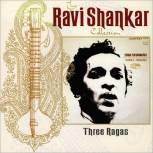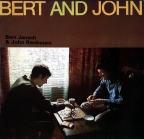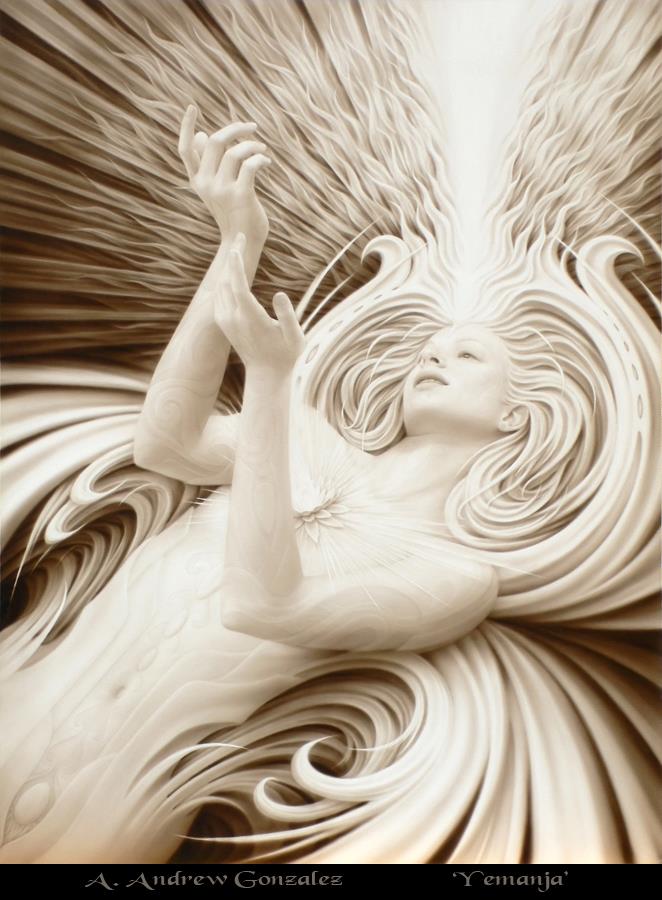American Primitive Raga and Folk Guitar
American primitive is a style of guitar which emerged starting in the 1950’s with Elizabeth Cotton and John Fahey. It was known as “primitive” a term inspired by the French impressionist painters. Primitive refers to developing an unconventional style and taking a non-academic path of study with the art form. The American Primitive style blends folk and blues into primarily instrumental compositions. The finger picking style evolved to blend the dissonance from blues, the fingering of folk music and a flavoring of Indian classical music.
American Guitarists John Fahey, Elizabeth Cotton, Robbie Basho, Leo Kottke, and Peter Walker inspired the newly emerging renaissance of this guitar style. This American Primitive style of guitar also involves a number of English guitarists John Renbourne, Bert Jansch, Davy Graham and Michael Chapman’s solo guitar pieces are prime examples. The various musicians each made unique contributions to the development of this diverse style, each with their own emphasis on folk, blues, ragtime and raga.
Today there are more Guitarists influenced by or playing in the American Primitive style then ever before. It has reached into the avant-garde, folk, blues, jazz, ragtime, new age, world and fusion music. Artists sometimes referred to as the new American Primtivists Jack Rose, Steffen Basho-Junghan, Daniel Bachman, Glenn Jones, Ben Chasney, Sir Richard Bishop, Steve Gunn, Alexander Turnquist, Bill Orcutt, Paul Metzger have all advanced the style in their own unique direction.
The most striking feature of this movement was not the integration of folk and blues which lays its foundation but the new integration of classical Indian musical structure known as the raga into the compositions, often called American raga or folk raga. Ravi Shankar was responsible for introducing many Americans and Europeans to Indian raga. As one of India’s greatest musicians his story is essential to the American primitive movement and its fusion with raga.
Ravi Shankar was born in April 7th 1920. He was born in a privileged family and studied music and arts from a young age. His Father and brother both moved to Paris in the 1930’s and Ravi soon followed. He went to school and studied in Paris where he began to play music publicly at the age of 13. He was instrumental in building the bridge between European and Indian music. In 1956 Ravi Shankar released his American debut album “Three Ragas”. He was a teacher to American guitarist Peter Walker, George Harrison of the Beatles, Phillip Glass and Anoushka Shankar (his Daughter) amongst others.

Ali Akbar Khan is known as one of the greatest sarod players in Indian history. His first 12″ LP arrived in 1955, that same year Yehudi Menuhin, world class classical violinist, invited Khan to play at MOMA in New York. He would later play at the concert for Bangladesh with George Harrison and his brother in-law Ravi Shankar. Peter Walker would study with Ali Akbar Khan for a brief time.
In 1957 Elizabeth Cotton was playing a primarily blues style which laid the foundations for the coming American primitive movement. Elizabeth Cotton played in an unique style and had many instrumentals which blended folk and blues. Her influence on the coming generations of guitar players has been greatly under appreciated.

John Fahey was the most notable guitarist to develop the New American style with a recording in 1959 under the name Blind Thomas later that year he would record “Blind Joe Death” both were later reissued on his own Takoma Records in 1964. Takoma Records became a label which brought this new guitar sound into the public attention. Many of the tracks on these albums were unique in picking style and in composition bring together folk and blues.

1963 Davy Graham released his debut album “The Guitar Player” and the following year released the classic “Folk, Blues and Beyond.” Davy Graham like Fahey blended folk and blues into intricate finger picking patterns.

1963 Sandy Bull releases “Fanstasias for Guitar and Banjo” which incorporates many middle eastern tonal structures on guitar and banjo.

Rabbie Basho was a major influence in this style born in 1940 with the name Daniel Robinson Jr would not begin playing guitar until college. “Daniel Robinson Jr. Once enrolled at the University of Maryland, he made a rapid transition from barrel-chested jock to cosmic beatnik to 12-string innovator self-styled in honor of a 17th-century Japanese poet (2). ” Over a two-decade career, his songs morphed from raga-style instrumentals to Native American tributes that featured Basho’s distinctively challenging vocal style (2).” Basho played the 12 string guitar in a way which had a meditative atmosphere. He transcended east and west with a transcendent sound which has had influence on new age composition. His vocal styling is not often mentioned because it is operatic and warbling which was incorporated only after his first few releases.
In 1962 Daniel Robinson (Robbie Basho) would hear Ravi Shankar for the first time. This introduction to the music of India had a major effect on Basho and many other guitarists who evolved this style.

In 1965 Basho releases his debut albums, “The Seal of the Blue Lotus” and “The Grail and The Lotus” on Takoma Records and they become true classics.
“Blind Joe Death” by Fahey is reissued on Takoma Records.
Bert Jansch released his first solo album “It don’t bother me” and “Bert Jansch” in 65’. These albums featured skillfully styled blues guitar with an English folk flavor and impressive finger picking.
John Renbourne also hits the scene with a solo album. Renbourne developed a classical English folk style using compositions from the renaissance and infusing that with blues and eastern raga influence. At points in his career he would employ the sitar, tanpura, and tablas (Indian drums) on his recordings. In 1966 Bert and John release a duet album which features incredible guitar playing. That same year Bert and John would begin to form The Pentangle.

1966 Ravi Shankar meets George Harrison and Harrison brings Indian music to the world in the following years. Harrison brought Ravi Shankar to play at music festivals and on American tours. Harrison took on the task of learning the sitar and even included Indian inspired music on The Beatles album “Revolver” and “Sargent Peppers Lonely Hearts Club Band.”
1966 Peter Walker’s album “Rainy Day Raga” was a breakthrough album blending folk, and Indian raga. Peter Walker was born in 1937 in Boston MA. In the early 1960’s “during a stint in San Francisco he heard the legendary Ravi Shankar perform and Walker’s lifelong fascination with Eastern raga was formed, along with his like passion for the flamenco tradition(6). ” “He studied with Ravi Shankar for a time in Los Angeles and also studied with Ali Akbar Khan in San Francisco. Returning to the Boston area, he became a regular on the 1960’s Cambridge and Greenwich Village folk scenes, where he became close friends with guitarist Sandy Bull and the tragic folksinger Karen Dalton(6).”

His debut album “Rainy Day Raga” is best described in the linear notes by Walker: “American raga, or as Bob Shelton of the New York Times calls it, American folk raga – the word raga is used because of the association with Indian classical and folk music, employs the Indian concept of starting with a drone, then a melodic line based on the scale, then weaving, reweaving, and interweaving the melodic line so that a freely improvised piece is constructed… Then when the melody line has been inserted I feel free to improvise, based on emotion…The music reaches a fusion point, and a sound is produced like running brook water with the improvisations like bubbles flickering over the surface. Then the piece must be closed out. (7).” A critic wrote “Peter Walker – tall, thin, dark haired, and intense – is an exciting young guitarist and creative musician who through his own playing, and as a musical director for Timothy Leary’s “Celebrations” is giving a new direction and a new sound to American “folk” music today. (7).”

1968 The Pentangle releases their first album “Sweet Child” immediately followed by the amazing albums “The Pentangle” and “Basket of Light.” The same year Incredible String band released “Hangman’s Beautiful Daughter” and “Wee Tam” featuring Robin Williamson and Mike Heron. These albums are hippie psychedelic folk with whimsical charm and eastern raga-acid-folk embellishments. Green Crown is a notable track which is a wonderfully psychedelic raga folk song the likes of which have yet to be recreated.
Takoma Records released Minneapolis based Leo Kottke’s second album “Circle Round the Sun” in 1970 which sold well (3). The rare and classic band Magic Carpet released its one and only self-titled album which infuses sitar into folk music.

In 1972 Glenn Jones is introduced to John Fahey in high school. (2)
1973 Ravi Shankar and Ali Akbar Khan release “Ragas” a stunning double disc LP featuring two of India’s greatest musicians.
On Feb. 28 1986, Robbie Basho dies on a chiropractor’s table in Berkeley after an “intentional whiplash” procedure causes several blood vessels in his neck to burst.
At the same time thirty-three-year-old guitarist Steffen Basho-Junghans first hears Basho’s music while living in East Berlin. “I discovered it with a German-licensed release of the first Windham Hill guitar sampler from 1981… About five or six months later, I got a message that Robbie died nearly at the same time that I was discovering him.” Throughout the 1980 to present day Steffen Basho-Junghans has been playing in the raga folk style. He was born in 1953 in Germany and toured extensively and developed a guitar festival in Berlin. In the 2000s he began releasing solo guitar albums which display incredible musical talent, creativity and impeccable skill. One of the most refined and polished integrations of folk and raga in meditative form. Steffen added Basho to his name out of respect and to honor his fallen musical hero’s legacy.

1992 Pandit Debashish Bhattacharya, a world renowned Indian musician, had his first major album release. He transformed “the Hawaiian slide guitar into a more Indian instrument, adding chikaris and sympathetic strings, and eventually coming out with a 24-string instrument based on the old Hawaiian six-string. This is universally regarded as the highest form of the slide guitar’s development anywhere, making Bhattacharya one of the masters of the instrument, especially when considering his amazing abilities in playing Indian forms on it (19).” Bhattacharya is one of the greatest musicians I have ever witnessed play on stage.

”In 1997 “Twenty-seven-year-old musician Jack Rose hears Fahey’s 1974 LP “Fare Forward Voyagers (Soldier’s Choice)” on WUVT FM in Blacksburg, VA. “Basically that record was the blueprint for me on how to merge Asian and American country blues into a raga form,” he says. “When I first heard it I thought the entire record was improvised. Later I found out ‘Thus Krishna on the Battlefield’ was improvised, but that the…title track was completely composed (2).”
In 1998 Ben Chasny released his first album under his moniker Six Organs of Admittance. This was the same year the Chasny first heard a cassette of Peter Walker’s “Rainy Day Raga” and it deeply influenced his guitar playing. He would go on to make many albums evolving the psych folk, psych rock, American primitive and raga guitar styles as well as noise and avant-garde.

1998 Sir Richard Bishop released his first solo album “Salvador Kali.” He was a founding member of the experimental rock outfit the Sun City Girls and has continued his love of eclectic musical styling. His albums range from the avant-garde, jazz, blues, folk, world music, raga, ragtime and free form improvisations.

February 22, 2001, John Fahey left his body for the unknown expanse.
Jack Rose released his first homemade CD-r in 2001.
In 2003 Chesny (Six Organs of Admittance) would release “For Octavio Paz” a solo guitar album which is a gem in the instrumental American Primitive style and one of two solo guitar albums (7).

In 2003 “James Blackshaw, a young musician from Kent, England, puts out his debut, “Celeste”, a CD-R of pastoral acoustic-guitar numbers with an initial run of 80 copies. “Discovering Robbie Basho was a real turning point for me,” Blackshaw says, “and to call him influential with regard to my own work is an understatement. Much more so than Fahey, even. (2).”

2004 Glenn Jones released his first solo album, “This is the Wind That Blows It Out.” Before going solo he was a member of the group Cul de Sac which collaborated with John Fahey on one of their albums. Glenn is a student of the “Takoma style” and plays a clean and beautifully melodic guitar and banjo pieces (8).
2004 Jack Rose releases a pair of debuting albums, “Two Originals of Jack Rose” on the Beautiful Happiness label and “Raag Manifestos” on VHF. Jack Rose got his start in the avant-garde electronic noise-punk band Pelt most known for their double CD “Ayahuasca.”
2004 Meg Baird comes to the surface with the band Espers, a Philadelphia based psych folk ensemble featuring Greg Weeks, Helena Espvall and Otto Hauser. The group first appeared in 2002 and released 3 full length albums. Which include intricate finger picked guitar styling with a heavy psychedelic folk influence. Meg Baird would later release solo albums and collaborate with her sister Laura Baird to form The Baird Sisters.

2005 “Kensington Blues” by Jack Rose also released on the label VHF is a masterpiece in the American primitive style with many raga influenced pieces.

2005 Minneapolis based musician Paul Metzger releases “Three improvisations on Modified Banjo.” This album is filled with meditative long form arrangements for a 21 string modified banjo built by the artist himself. The album integrates folk, jazz with a heavy middle eastern, raga influence and Japanese Bouzouki music. Glenn Jones stated in Minneapolis that this album is a large part of what inspired him to take up the banjo. Paul Metzger is currently creative director for Nero’s Neptune a Minneapolis record Label run by Mark Trehus which releases limited edition records by Metzger and other artists.

2006 Scot Ray releases “Scot Ray participated for three albums with Bill Barrett (chromatic harmonica), on dobro & acoustic slide-guitar as a duo under the name of Gutpuppet. As far as I know, this is his first solo-release. Here he plays dobro, 6 & 12 string dreadnaught and the 22 string chaturangui, -the Indian guitar designed by Indian master Debashish Bhattacharya (17).”

2007 Alexander Turnquist emerges releasing his debut album “Faint at the Loudest Hour.” His music is more meditative using harmonics and integrating that into landscapes of swelling echoes.

Steve Gunn released his debut solo album “Sundowner.” Based in Brooklyn, New York he began as a hardcore metal musician in high school who loved Indian music. His recent releases show a blend of singer songwriter with American Primitive guitar. Some albums long formed and experimental with others more or less song based.
Jack Rose died on December 4, 2009, of a heart attack, he was 38 years old. This was a major loss as Jack Rose brought many musicians together and was an outspoken member of an otherwise quite group of guitarists.
2010 Daniel Bachman releases his first album on cassette called “Feast of Green Corn” on Mirror Universe Tapes (12). Daniel would go on to release several albums which feature the American primitive style. He often leans in the blues direction on many of his pieces but in the 2010’s is ever more integrating eastern influenced guitar.
2013 Glenn Jones releases “My Garden State” a really wonderful album recorded by Laura and Meg Baird.

Steve Gunn puts out two albums “Time Off “(2013) which is more song based approach with interesting songs and really enjoyable guitar which reflects influence from the 1960’s rock to American Primitive guitar. Steve Gunn and Mike Gangloff’s album “Melodies for a Savage Fix” which explores drones and raga folk and blues with 20 minute tracks.


Daniel Bachman’s “Orange County Serenade” (2014) plays like a thesis on the American primitive guitar including all the best of raga, blues and slide in original compositions.

Recommended listening:
American Primitive and raga guitar influences and highlights-
Ravi Shankar- India’s Master Musician (1963)
Robbie Basho – Seal of the Blue Lotus(1965) Reissued as Guitar Soli.
Peter Walker – Rainy Day Raga (1966)
John Fahey – Fare Forward Voyagers (Soldier’s Choice) (1973)
Ravi Shankar and Ali Akbar Khan –Ragas (1973)
Six Organs of Admittance – For Octavio Paz (2003)
Jack Rose – Kensington Blues (2005)
Paul Metzger – Three improvisations for Modified Banjo (2005)
Steffen Basho-Junghans – late summer morning (2006)
Michael Chapman – Trainsong: Guitar Compositions 1967 – 2010 (2010)
Glenn Jones – My Garden State (2013)
Steve Gunn – Time Off (2013)
Article By: Transpersonal Spirit
Bibliography
- http://en.wikipedia.org/wiki/American_Primitivism
- The Cosmos Club
Turtle sex, chiropractic death, and peyote under the pillow:a year-by-year account of American primitive guitar
By David Dunlap Jr. http://www.washingtoncitypaper.com/cover/2006/cover0707.html?navEdit (there are many factual errors in this article!).
- http://www.allmusic.com/artist/leo-kottke-mn0000045077/biography
- http://www.allmusic.com/artist/robbie-basho-mn0000830321/biography
- http://www.allmusic.com/artist/peter-walker-mn0000330952/biography
- Peter Walker. Rainy Day Raga (stereo). Originally released Vanguard Records Santa Monica Ca. 1966. Reissued with addition notes on Harte records 2008. Linear notes.
- http://www.allmusic.com/artist/elizabeth-cotten-mn0000796950/biography
- http://www.allmusic.com/artist/glenn-jones-mn0000675976/discography
- http://www.allmusic.com/artist/jack-rose-mn0000122601
- http://www.allmusic.com/artist/davy-graham-mn0000814036/discography
- http://www.allmusic.com/artist/john-renbourn-mn0000192925/discography
- http://danielbachman.com/music.html
- http://www.allmusic.com/artist/richard-bishop-mn0000945019/discography
- http://chandrakantha.com/biodata/ravi_shankar.html
- http://www.allmusic.com/artist/ali-akbar-khan-mn0000742673/biography
- http://psychevanhetfolk.homestead.com/ragaguitar.html
- http://psychedelicfolk.homestead.com/ScotRay.html
- http://www.debashishbhattacharya.com/creation_01.htm
- http://www.allmusic.com/artist/debashish-bhattacharya-mn0000230893/biography

you are a hero for writing this. thank you!
Thank you so much. Its an obscure slice of music history that offers so much to the world!